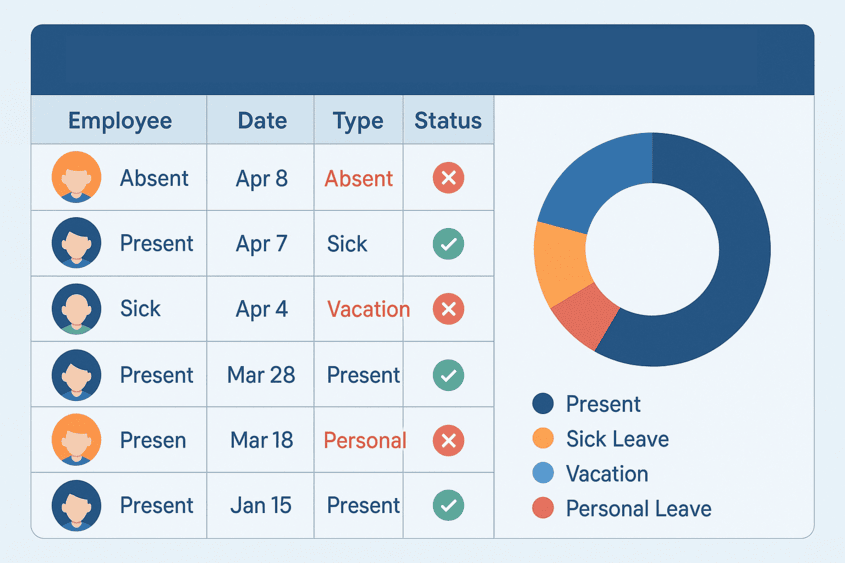Employee Absence
Get a clearer picture of employee absence: what it is, the types and causes, why it’s important, and how to manage it.

What is Employee Absence?
An employee absence refers to any time an employee is not present during scheduled working hours. It is a broad term that includes all forms of time away from the job.
Types of Employee Absence
Employee absences can be generally classified into the various types depending on the circumstances.
Planned absence (vacation, parental leave)
This kind of an absence is approved in advance and usually paid.
Unplanned absence (sick leave, emergencies)
This happens unexpectedly and may or may not be paid.
Unauthorised absence (no call, no show)
This occurs without approval or proper notice.
Common Causes of Employee Absence
There are different reasons why employees may be absent from work. Understanding these causes is essential for organizations to manage attendance effectively and support employee well-being.
Health and illness
This may be sudden or related to chronic health conditions, as well as stress and mental health challenges such as burnout or anxiety.
Family/personal matters
This includes caring for children or elderly relatives, bereavement, or emergencies, also contribute to employee absences.
Burnout or disengagement
This may occur due to prolonged stress or overwork (burnout), as well as a lack of motivation or emotional connection to work (disengagement).
Legal obligations (jury duty, military leave)
These absences are usually protected by law. They represent legally required duties, such as jury duty or military service.
Why Employee Absence Matters
Employee absences can reduce productivity, increase costs, and highlight underlying workplace issues. Proper management helps maintain efficiency and support employee well-being.
Absence Management Best Practices
Best practices for absence management are proven methods that help organizations handle employee time off fairly and consistently. They ensure smooth operations while supporting employee well-being and legal compliance.
-
Clear policies
- Transparent approval process
-
Supporting employee well-being to reduce absenteeism
- Absence tracking tools (e.g., TMetric PTO module)
Related Terms
Here are some words and phrases that are connected in meaning or commonly used in the same context as an employee absence.
Absenteeism
Absenteeism in the workplace is when an employee repeatedly or habitually misses scheduled work beyond acceptable limits, such as planned vacation or occasional sick days.
Absence Rate
The absence rate is a metric that shows how much total work time was lost because of employee absences. It helps companies track attendance and spot potential problems.
Bradford Factor
The Bradford Factor is an HR formula that measures absenteeism by assigning a higher score to frequent, short-term absences. It is based on the principle that many brief disruptions are more harmful to a business than a few long absences.
Presenteeism
Presenteeism is when employees show up for work even when they are sick or stressed. Although they are physically present, their productivity and performance are significantly lowered.


